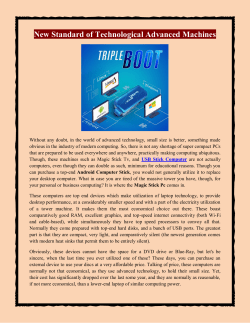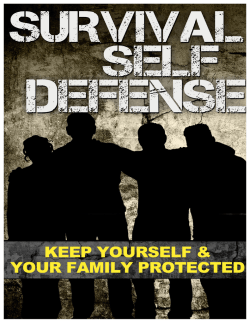
why most digital strategies fail: and what you can do to make them
WHY MOST DIGITAL STRATEGIES FAIL: AND WHAT YOU CAN DO TO MAKE THEM STICK WHY MOST DIGITAL STRATEGIES FAIL: AND WHAT YOU CAN DO TO MAKE THEM STICK WHY MOST DIGITAL STRATEGIES FAIL: AND WHAT YOU CAN DO TO MAKE THEM STICK 3 ABSTRACT We’ve spent the better part of a decade instilling in organizations the need to embrace digital strategies that extend beyond the bounds of the web page. Want to be effective at Social Media? Come up with a strategy that integrates with other marketing and communications efforts. Need to implement a Content Management Solution? You’ll also need a digital strategy to look at how you’ll be using the platform so it can be optimized for your specific requirements. Looking to produce more effective and engaging content? Simple. You’ll want a Content Marketing Strategy for that. Oh, and if you want to maximize your internal resources and become more efficient at all of the other strategies combined, you’ll definitely need an Enterprise Content Strategy to help steer both your direction and the organizational change required to implement it. But for all of our efforts in strategizing, one thing seems very clear - creating the strategy and making it stick are two very different things. If you’re nodding your head right now, you might be recalling a recent strategy that had all teams on-board before interest waned and everyone moved on to the next big idea. Or perhaps you’re one of the few still struggling to implement a strategy that you know is the solution to many of your organization’s problems, but you just can’t get ahead without buy-in from your senior leadership team. And, if you’re me, maybe you’ve encountered a whole host of long discarded, legacy strategies from other consultants that are sitting in a desk drawer barely making it past the sign-off phase. Why is that? Why do we embrace strategy and then implement it for awhile (or not at all) and then go back to how we’ve always done things before? 4 WHY MOST DIGITAL STRATEGIES FAIL: AND WHAT YOU CAN DO TO MAKE THEM STICK CHANGE IS A PROCESS NOT AN EVENT Many people erroneously believe that change is something you do. If you decide that you would rather bike to work every day instead of taking the car, you do it. But, change is more than a simple alteration from one state to another. Change has an emotional component to it as well. In fact, it is that emotional component that typically prevents a relatively simple action state from sticking. For instance, you may decide that you would like to take your bike to work every day, but after you’ve done it a few times (action change) you start thinking (or feeling) all of the reasons you’d rather not take your bike to work: It’s raining and you’ll feel cold. It’s tiring. It’s a hassle or inconvenience. It’s slow. Suddenly, your good intentions to ride your bike to work every day, are thwarted by all of the emotions you might associate with that action and you quickly fall back into the comfort of familiarity — driving the car. This is exactly what happens when organizations decide to adopt a strategy and then fail to see its tactics through. In this instance, the emotional comfort of historical approaches are sought by everyone in the company and not just in response to the personal demons we battle in our heads while making everyday life choices. For all of the good intentions we may have as an organization in adopting or implementing a strategy, oftentimes the ongoing tactics required to meet its objectives don’t stick. See if any of these sound familiar: • Frustration: Our team wants to implement the strategy, but the other departments couldn’t be bothered. • Uncertainty: We’ve had a leadership change and there isn’t buy-in for these approaches any more. • Fear: But what if it doesn’t work? • Hopelessness: Why bother? I’m the only one who cares enough to stick with it. When you contrast these responses with the can-do attitude and excitement around creating the strategy in the first place, it’s a wonder any strategies ever see the light of day! What’s more, the higher the stakes in affecting the business’ bottom line, the more likely the strategy won’t be implemented over the long term — especially, if that strategy requires organizational change. WHY MOST DIGITAL STRATEGIES FAIL: AND WHAT YOU CAN DO TO MAKE THEM STICK IT’S NOT ENOUGH TO JUST CREATE THE STRATEGY An organization’s culture consists of the common values, mindsets, and norms of behaviour that have emerged over time and that most employees share. It is the outcome of the cumulative decisions that have been made in the past, and of the leadership and management behaviours that have resulted from these decisions. Put another way, a corporate culture is the reason why some companies have pool tables and basketball hoops in their office, while others might be furnished entirely in mahogany and green. But more than physical appearances alone, corporate culture and its openness to change are important to the success of a strategy as they are most often the drivers behind both its adoption and its implementation. In addition, the older an organization is, the more resistant to change it invariably will be. The reason for this, of course, is that the corporate memory, customs and traditions that have made the company what it is today are all wrapped up in the emotional ties and sentimentality employees have for the company as a whole. For instance, you’re more inclined to hear: “That’s just how we do things around here.” without any rational explanation as to why. In fact, legacy approaches are often one of the single most ways strategies are quickly undermined. The problem with many strategies today is that while they may address the “how” of achieving objectives in the form of actionable tactics, they also commonly forget to address the “how” in terms of culture. Why? Because that is the hard part. But it’s also the most important part, because without it you aren’t aligning your tactics or even your change management to the core foundation of your company as a whole… that of its culture. vs. L A RGER / O L DER CO MP A NI ES more resistant to change complex hierarchies many tribes faithful to tradition SMA L L ER / NEW ER CO MP A NI ES agile in implementing new approaches simplified or flatter reporting structures one or few leaders traditions are not yet ingrained or remain distinct from process 5 6 WHY MOST DIGITAL STRATEGIES FAIL: AND WHAT YOU CAN DO TO MAKE THEM STICK D R I V I N G M I SSI ON / V I SI ON VA L UES P A T H C U L TU R E V AL U ES P RA CTI CES BEH A VI O RS S TR A TE G Y G OA L S O BJ ECTI VES A CTI VI TI ES G U I D I N G Having a strategy today implies a set of capabilities at which an organization must excel in order to achieve its strategic goals. If resourcing gaps exist, or there isn’t an appetite by the C-Suite to increase or alter existing capabilities to align with a strategy’s tactical requirements, then the strategy will never gain traction. Diagram: Torben Rick, Meliorate: http://www.torbenrick.eu/blog/strategy/corporateculture-is-driving-the-strategy-or-undermining-it/ P A T H Far too often, the organization will erroneously believe that their internal capabilities — that driving path of their corporate culture — either already exist (they don’t) or that their existing configuration can be merely tweaked to align with the requirements of the strategy (it can’t). RE S ULTS WHY MOST DIGITAL STRATEGIES FAIL: AND WHAT YOU CAN DO TO MAKE THEM STICK A STRATEGY IS NOT A FINITE DELIVERABLE We know that whenever something new collides with something old, the old always wins. Or does it? It’s actually not as black and white as it seems. Organizations must recognize that the rolling out of any strategy requires time. How often have I heard: “We need this strategy by the start of Q4. You’ll be presenting to the Board on this date so if you can have the PowerPoint deck and final report by then that would be great. We’ll take it from there.” Time passes and I revisit the client only to find that after the drop-dead date has passed the strategy went nowhere. However, if you view your weight loss plan as a lifestyle choice (I am going to take up running, and am going to choose to eat healthy every day), then smaller set-backs like a pizza binge at a tailgate party won’t set you off your permanent course. SPIRAL MODEL OF THE STAGES OF CHANGE Change is a process and that process is never linear. As an organization adapts to the requirements defined by its strategy you can expect some regression into the familiar. It’s how companies handle that regression, however, that makes all the difference between success and failure. Think about a New Year’s weight loss resolution, for instance. If you only define your weight loss plan as a diet that lasts for a finite period of time (I have to get thin by my wedding) you may have some success. But as soon as you have a bad day and discover the buried Ben & Jerry’s at the back of the freezer, you’ll either regress a little bit (by also devouring the salt and vinegar chips in the cupboard and then starting on your diet anew in the morning) or you’ll fall off the wagon altogether. MAINT Precontemplation CONTE MP ENANC PA N PRE LATIO ACTIO Precontemplation CONTE Diagram: Adapted from Prochaska JO, et al. “In Search of How People Change”, American Psychologist (Sept. 1992), Vol. 27, No. 9, pp. 1102–14. E N RATIO N N REPA ION P MPLAT ACTIO RATIO N 7 8 WHY MOST DIGITAL STRATEGIES FAIL: AND WHAT YOU CAN DO TO MAKE THEM STICK The same thing goes for organizations. When any kind of regression occurs, it’s absolutely critical to slow down …think …and come to together as a company to understand what didn’t work and why. It’s equally important to remain nimble enough to make whatever modifications are required in spite of forging ahead towards achieving the objectives originally established by the strategy itself. Not unlike behaviour modification, the following stages define organizational change as well: • Pre-contemplation: The organization has no conscious intention of making a change, however it may be cognizant that change is needed based on maintaining a competitive advantage, or recognizing pain-points within its operations. • Contemplation: The organization is fully aware that a problem exists, but has not yet agreed to take action. The contemplation stage is typically where the idea of creating a strategy may come to fruition, but a cost-benefit analysis is required in order to fully commit to the idea. At this stage, there has to be some incentive to encourage movement to the next step. • Preparation: By now, the company has decided to take action. The strategy is often developed during this stage. • Action: At this stage, the organization has implemented the strategy or the organizational change required to support its tactics and is starting to face some of the challenges that will undoubtedly bring about a desire to return to the old ways of doing things. • Maintenance: For companies, the maintenance stage means that new approaches have been adopted and functioning for at least a full four quarters. Relapse is less likely, and further modifications to new procedures and processes are more apt to occur as opposed to a regression to previous, legacy methods. It’s important to note here that the path between stages is rarely straightforward. Organizations will often spring back and forth between each as they try to develop any given strategy, and more importantly, as they make the necessary organizational changes required to make it stick. Many erroneously believe that once the organization has developed its strategy, action has already taken place. Under this model, it becomes apparent why this is not the case. The strategy is only completed as the company prepares to implement the change, and not during the action stage when the implementation of tactics and the resulting organizational design required is most critical. WHY MOST DIGITAL STRATEGIES FAIL: AND WHAT YOU CAN DO TO MAKE THEM STICK AS A COMPANY’S S T R A T E G Y C H A N G E S, SO DO THE ORGANIZATIONAL CAPABILITIES IT NEEDS You never change things by fighting the existing reality. To change something, build a new model that makes the existing model obsolete.” – BUCKMINSTER FULLER, NEO-FUTURISTIC ARCHITECT A few years ago, I was working with a company that came to me asking for an Enterprise Content Strategy. They had come to realize that while the core of their business was creating products and services for the financial sector, the corporate culture around which much of this activity took place was centred around publishing inordinate amounts of content (assets). These assets had started to define and shape their behaviour, and not for the better. They were scrambling to keep up with the demands of a digitally connected marketplace, while in turn continuing to publish legacy print documents in keeping with what they had always done. In the midst of this flurry of publishing activity, departments were creating content without keeping other departments in the loop. Content efforts were duplicated, resources were stretched thin, and the organization had completely lost track of what content was even out there in the public domain leading to concerns about reputation management. Staff had fallen into frenetic routines around the content they were creating that didn’t even align with their job descriptions. This was a case where any strategy recommended would never have taken hold in the organization simply because the assets and routines were disconnected from the company’s overall structure.1 Structure projects a message about what work is most important. If the structure does not at least nominally support the strategy, then everyone in the organization will find themselves working around a formidable obstacle.2 In this case, the content work and content asset management was not being managed high enough within the corporate hierarchy to give any sort of importance to the strategy at hand. The organization’s structure had been established long before the Information Revolution, and the work they were doing now no longer fit within the hierarchy they had in place. This was literally a case of trying to fit a square peg into a round hole. In order to ensure the successful adoption of the proposed Enterprise Content Strategy, I reviewed both the corporate culture and the organizational structure and made recommendations accordingly for both. This meant a thorough inventory of job functions, workflows, as well as roles and responsibilities which lead to the discovery of significant resourcing gaps and the need to restructure some of the organization. What started as a content problem, quickly unveiled itself to be a people problem. 1 Managing Organizational Forgetting, Pablo Martin de Holan at TEDxEMLYON: https://www.youtube.com/watch?v=3NzgEwye6Uk 2 Designing Your Organization: Using the Star Model to Solve 5 Critical Design Challenges, Amy Kates & Jay R. Galbraith, 2007 9 10 WHY MOST DIGITAL STRATEGIES FAIL: AND WHAT YOU CAN DO TO MAKE THEM STICK MAKING THE STRATEGY STICK Strategy without tactics is the slowest route to victory. Tactics without strategy is the noise before defeat.” – SUN TZU As this report demonstrates, good intentions rarely lead to permanent change. While a company might have a strategy, it represents merely the preparation for the action required and not the action itself; and, if those proposed actions have not been aligned with its foundational corporate culture, it will never gain traction. Furthermore, if the organizational structure is not aligned with the routines and assets being managed, any tactics proposed in support of the strategy will, in time, fail. S-T-R-E-T-C-H F RAME WORK F OR STRATE GY IMP LE ME N TATION S H T ierarchy T C tructure alent R ulture E ime ngagement outine Under these conditions most strategies never stand a chance. Does this mean that organizations should give up on strategizing altogether? No, but it does mean that embarking on the creation of a strategy means much more than simply ensuring you have the budget to write it. In order for any strategy to truly take hold and create change, companies need to S-T-R-E-T-C-H beyond what they are doing now to create a foundational building block upon which the strategy can flourish. In the proposed framework, the empty space represents the optimal environment for which the following 7 elements must be present in order to support the strategy’s tactics. Being prepared to only look at one or a few of these elements in isolation from the tactics will impact the structural integrity of the cube as a whole, making the foundation for any well-thought out strategy inherently weak for execution and longer term adoption. • Structure: The organizational chart must align with the tactics proposed. Organizational re-design may be required if successful implementation of tactics don’t align with existing reporting structures or departmental silos. WHY MOST DIGITAL STRATEGIES FAIL: AND WHAT YOU CAN DO TO MAKE THEM STICK • Time: Change takes time. A strategy or its implementation does not occur as soon as a report is issued. In some instances, it may take years for the strategy to be fully realized. Remember, a strategy is a trajectory not an end-state (although the objectives as defined by the strategy might be). • Talent: Do employees have the skill sets required to ensure proper implementation of tactics? Training and professional development need to be a priority if resourcing gaps exist. In addition, strategy budgets must account for the need to hire employees should increased capacity be required. • Routines: What are the routines around the management and creation of assets? Both assets and routines are connected to structure, so routines should examine everything from workflows to governance, including the realignment of job descriptions, as well as roles and responsibilities within the organization. • Hierarchy: Buy-in needs to be at all levels of the organization. Ensure at least one champion for the strategy and its tactical execution holds a position within the C-Suite. In addition, key decision-makers should not hold temporary or contract positions. Strategies need champions who are committed to the execution of tactics over the long term. • Engagement: How employees feel about the strategy and any change that may come with it is arguably more important than the strategy itself. These are the people that are responsible for making it stick. Empower them to understand the value they bring to the implementation of tactics. Appreciate that there may be a sense of loss, confusion, and fear as a result of new ways of doing things. Communicate early, and communicate often. Make sure there are tools in place to do so at regular intervals, and that feedback mechanisms exist regardless of position within the org chart. • Culture: Be realistic about the kind of corporate culture that exists. Make sure short-term goals align with the existing environment, but account for longer-term goals that can dove-tail with a larger change management or business transformation piece. Strategies today need to encompass more than simply objectives and tactics in order to ensure success. In particular, digital strategies demand a more fertile environment within the organization to take hold because so many of the tactics required run contrary to the existing Industrial Revolution models in place. Before looking at creating a strategy, companies need to be honest with themselves about how amenable they are to S-T-R-E-T-C-H beyond the operational confines of the familiar, the triedand-true, the “this is how we’ve always done things” mentality that so often mire well-intentioned ideas. Without a thorough examination of the truth about the organization itself and its willingness to adapt to the proposed tactics, your strategy will be nothing more than a stagnant report lacking in energy to propel innovation and, more importantly, the change necessary to go with it. 11 12 WHY MOST DIGITAL STRATEGIES FAIL: AND WHAT YOU CAN DO TO MAKE THEM STICK ABOUT THE AUTHOR KRISTINA MAUSSER Kristina Mausser is a senior management consultant who specializes in delivering enterprise content solutions for clients around the world. Her interests lie in governance, organizational design and employee engagement. Kristina is a co-owner of Kina’ole Inc. WHY MOST DIGITAL STRATEGIES FAIL: AND WHAT YOU CAN DO TO MAKE THEM STICK kinaole.ca
© Copyright 2025







